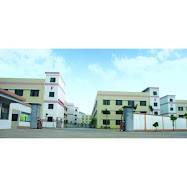Investment casting is also known as the lost wax process or precision casting (see our article:Investment casting history). This process is one of the oldest manufacturing processes. Intricate shapes can be made with high accuracy. In addition, metals that are hard to machine or fabricate are good candidates for this process. It can be used to make parts that cannot be produced by normal manufacturing techniques, such as turbine blades that have complex shapes, or airplane parts that have to withstand high temperatures.
The mold is made by making a pattern using wax or some other material that can be melted away (in Camax we use wax). This wax pattern is dipped in refractory slurry, which coats the wax pattern and forms a skin. This is dried and the process of dipping in the slurry and drying is repeated until a robust thickness is achieved. After this, the entire pattern is placed in an oven and the wax is melted away. This leads to a mold that can be filled with the molten metal. Because the mold is formed around a one-piece pattern, (which does not have to be pulled out from the mold as in a traditional sand casting process), very intricate parts and undercuts can be made.
The materials used for the slurry are a mixture of plaster of Paris, a binder and powdered silica, a refractory, for low temperature melts (in Camax we use silicasol, or water glass,click to view more about silicasol). For higher temperature melts, sillimanite an alumina-silicate is used as a refractory, and silica is used as a binder. Depending on the fineness of the finish desired additional coatings of sillimanite and ethyl silicate may be applied. The mold thus produced can be used directly for light castings, or be reinforced by placing it in a larger container and reinforcing it more slurry.
Just before the pour, the mold is pre-heated to about 1000 ºC (1832 ºF) to remove any residues of wax, harden the binder. The pour in the pre-heated mold also ensures that the mold will fill completely. Pouring can be done using gravity, pressure or vacuum conditions. Attention must be paid to mold permeability when using pressure, to allow the air to escape as the pour is done.
Tolerances of 0.5 % of length are routinely possible, and as low as 0.15 % is possible for small dimensions. Castings can weigh from a few grams to 35 kg (0.1 oz to 80 lb), although the normal size ranges from 200 g to about 8 kg (7 oz to 15 lb). Normal minimum wall thicknesses are about 1 mm to about 0.5 mm (0.040-0.020 in) for alloys that can be cast easily.
The types of materials that can be cast are Aluminum alloys, Bronzes, tool steels, stainless steels, Stellite, Hastelloys, and precious metals. Parts made with investment castings often do not require any further machining, because of the close tolerances that can be achieved.
Click here to view complete flow of this technique in Camax.
Monday, July 14, 2008
Subscribe to:
Post Comments (Atom)




No comments:
Post a Comment